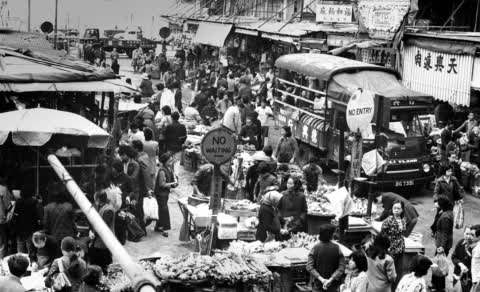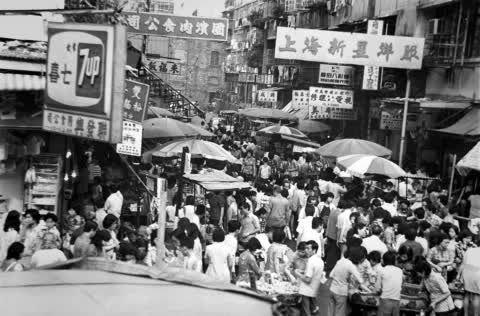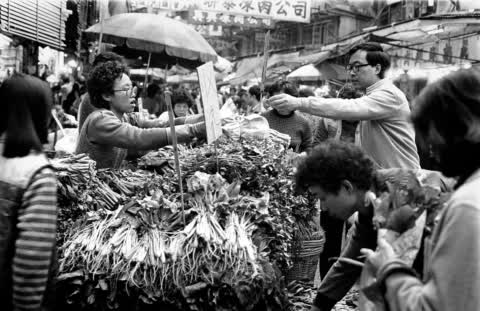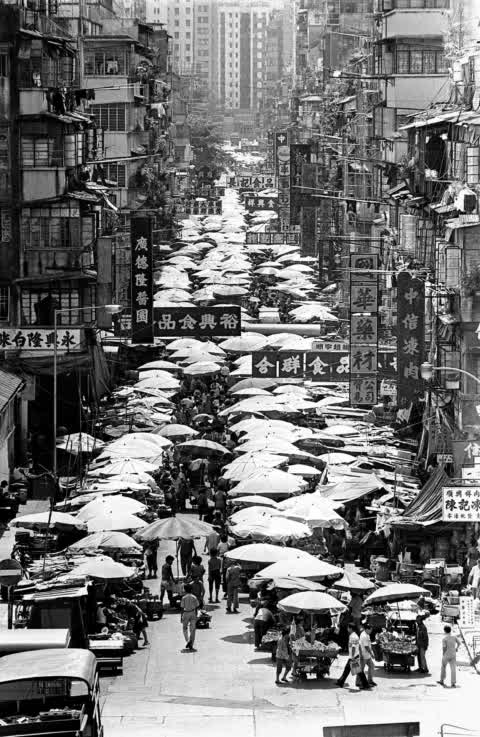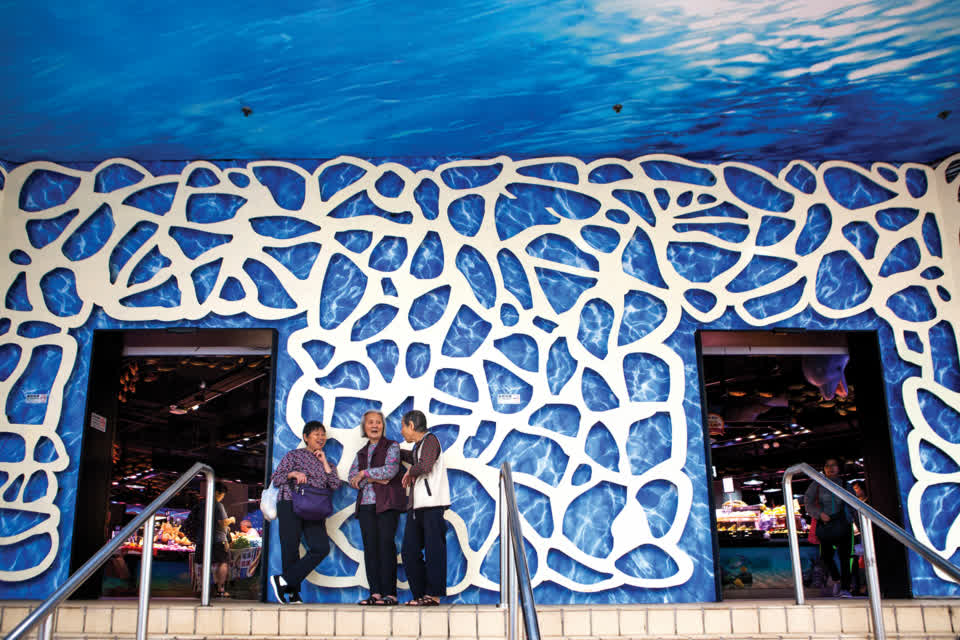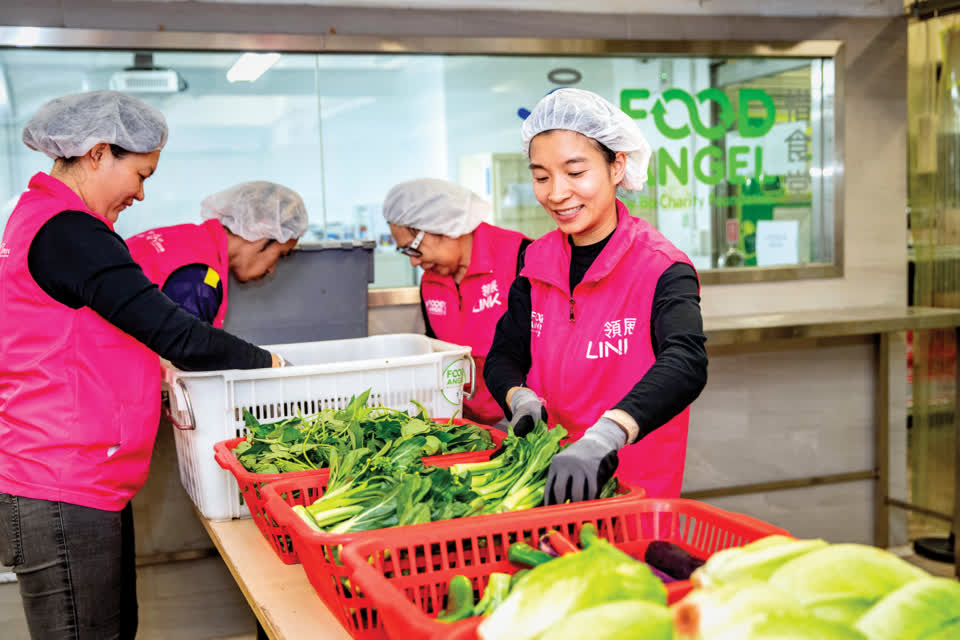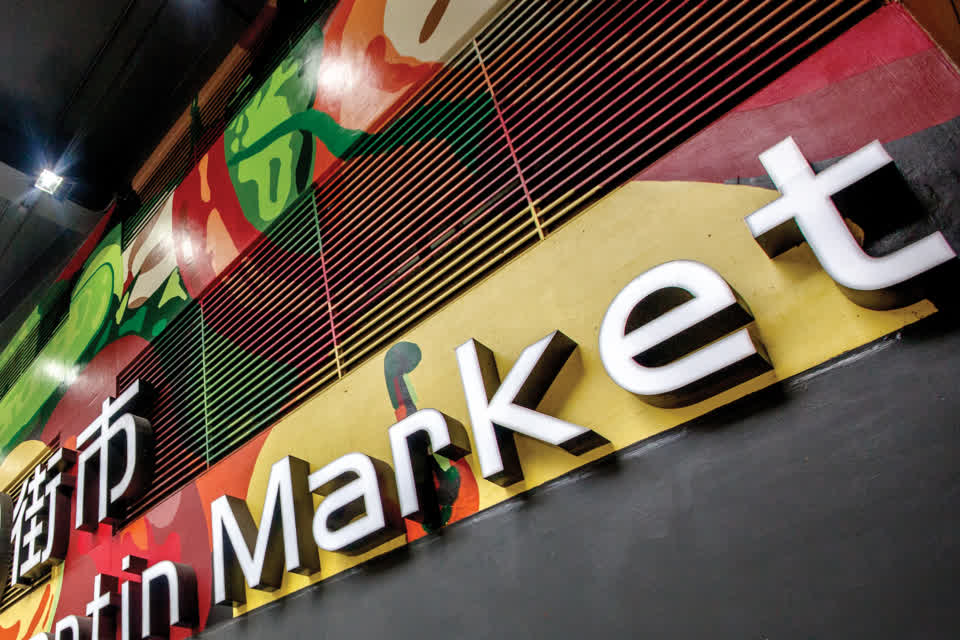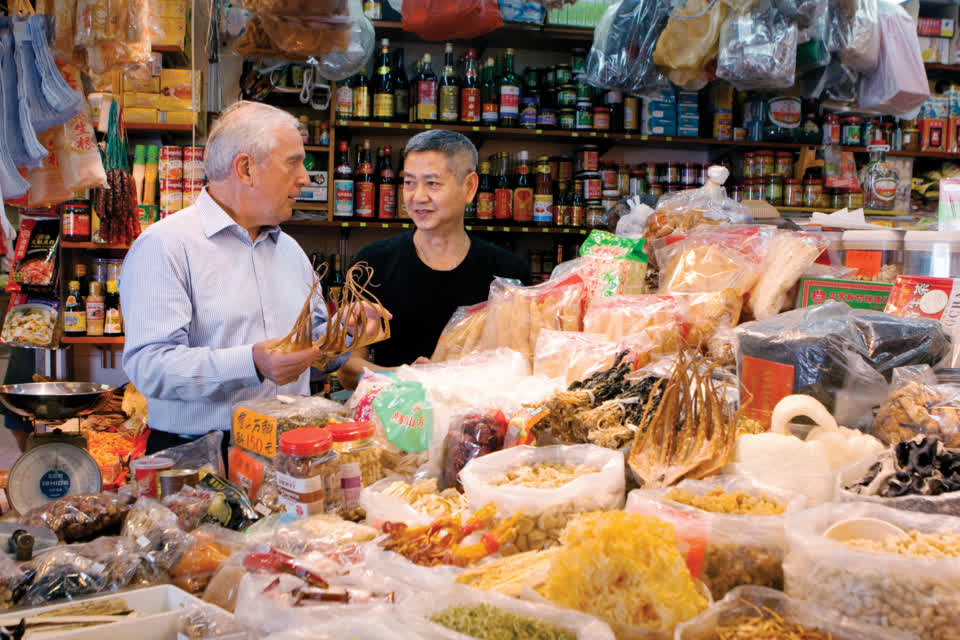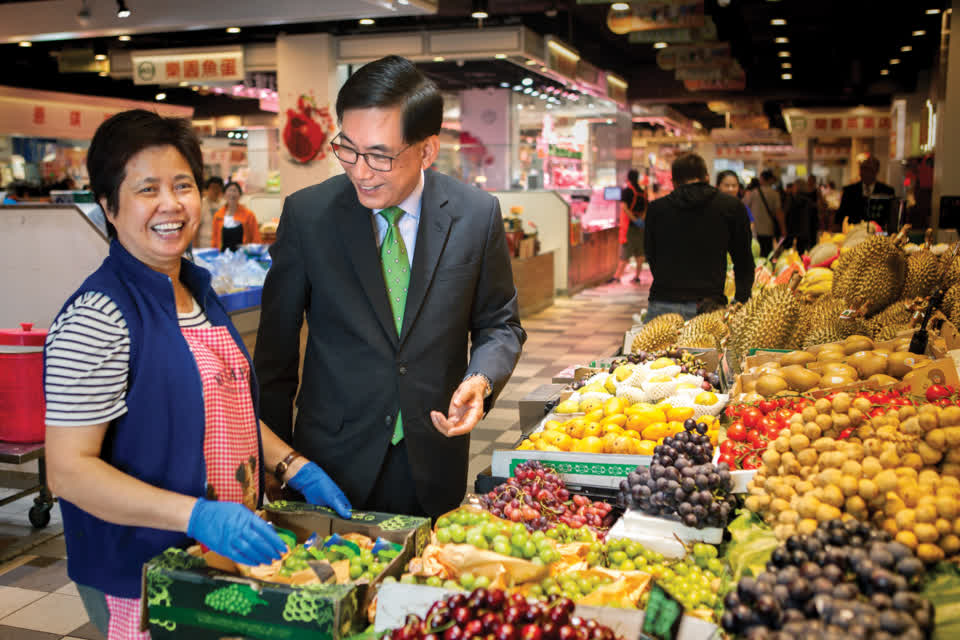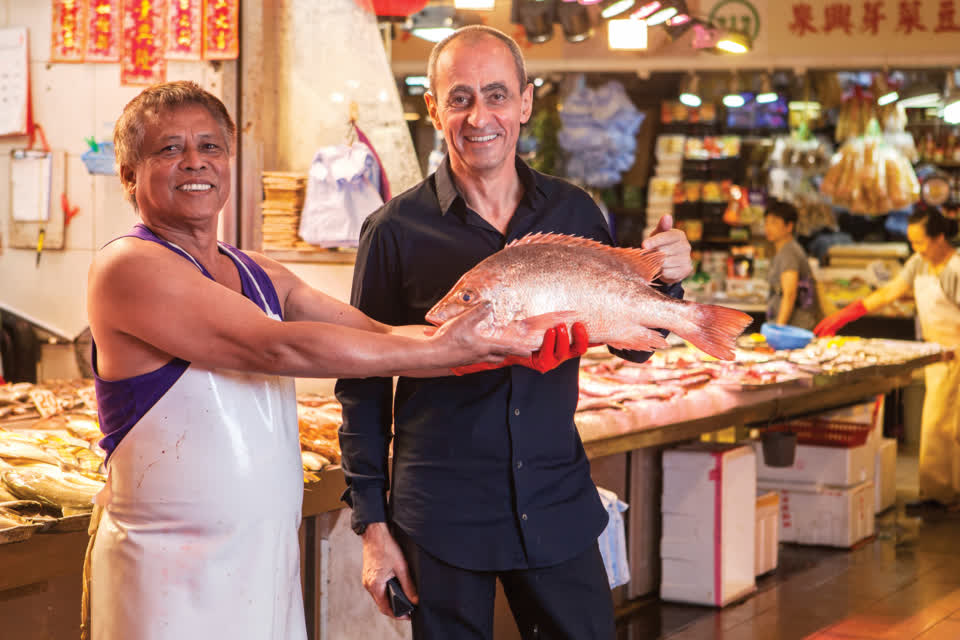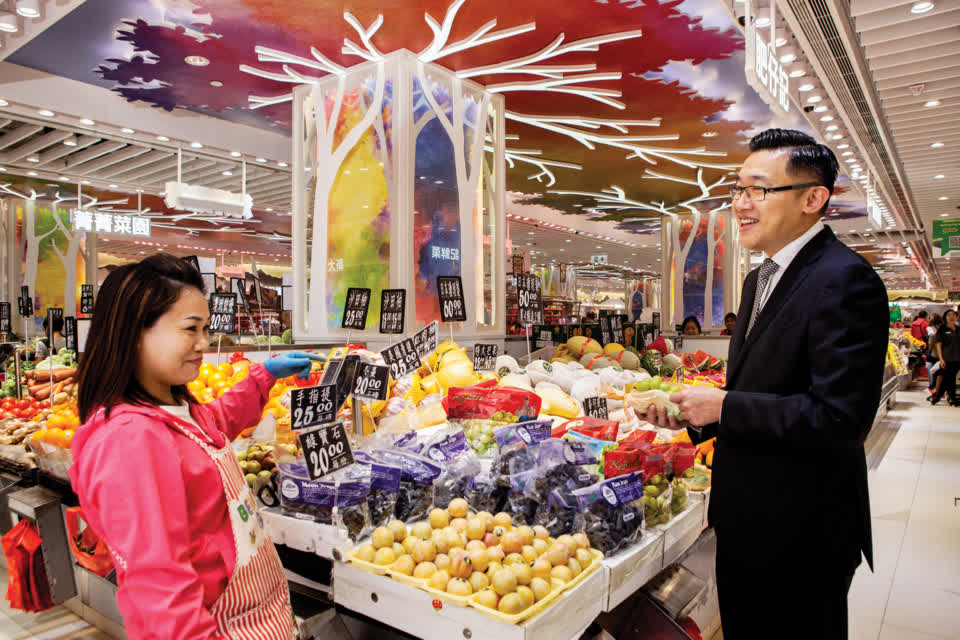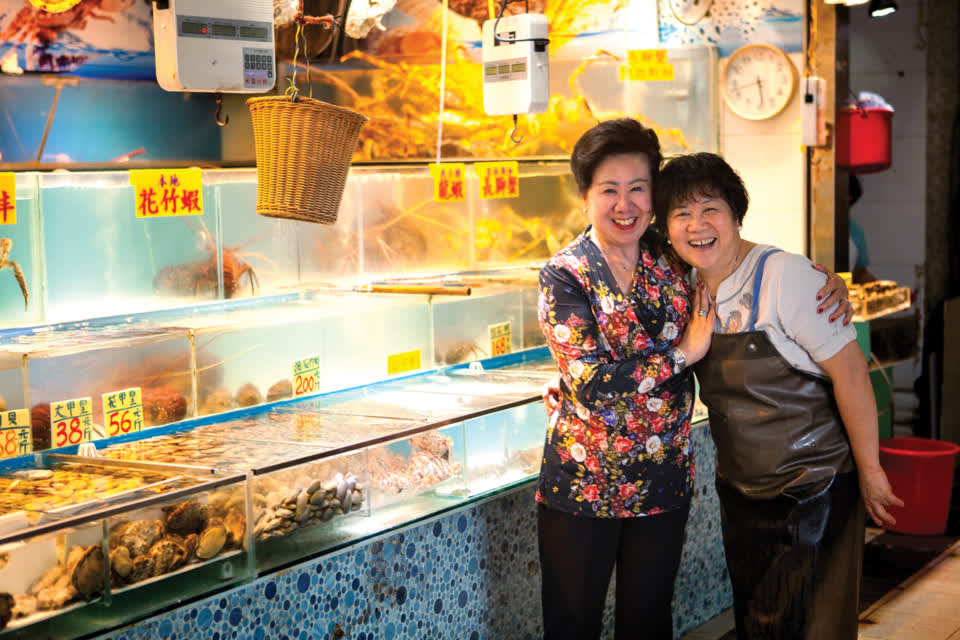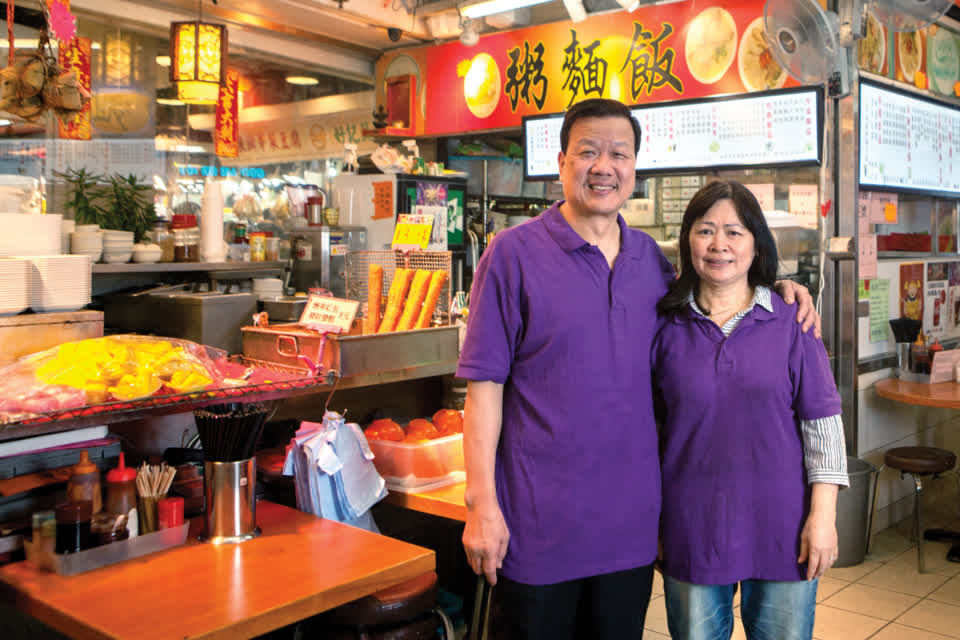It is impossible to imagine Hong Kong without Cantonese cuisine. And Cantonese cuisine would simply not be possible without the fresh produce supplied by Hong Kong’s food markets: the leafy green vegetables, the best cuts of meat, the still-flapping fish.
Ask anyone around the world to conjure up their mental picture of Hong Kong. The harbour might be there; probably the skyline too. But among the images, there is bound to be a scene of a bustling, chaotic street market, busy with shoppers looking for the freshest fruit, the fattest chicken or the tastiest roast pork; the air suffused with the clashing aromas of ripe fruit and seafood, and loud with the calls of stallholders proclaiming their wares and prices. And not just perishable foods: the fresh markets also sell dried and preserved goods, salted eggs and fish, cut flowers and more varieties of tofu and noodles than anyone could dream up.
The street market is an image that has come to represent Hong Kong, even though most fresh markets have since moved indoors. The wide red lampshades which light the fresh produce have become recognisable icons of Hong Kong culture, even reproduced and sold in souvenir shops alongside tin letterboxes and images of the harbour. So how did these markets get their start, and how have they evolved over the decades?
Markets originally sprouted up wherever it was convenient for farmers to sell their harvest, or for fishermen to land their catch. Sometimes these markets were sited at an equal distance between a group of villages, making them a convenient meeting place for everyone. They were not always permanent, but would take place on certain days of the week, to a regular schedule.
One of these places was the New Territories town of Tai Po – which is still called Tai Po Hui (“Tai Po Market”) to give it its full name. As far back as the 1700s, in Qing-dynasty times, there was a market here on the bank of the Lam Tsuen River. Farmers would carry their produce not only from nearby settlements, but also from isolated mountain villages only accessible by footpaths. The original market was set up by members of the local Tang clan, but at some point other clans set up a rival market on the other side of the river; true market competition in effect. There was even an agreed system to ensure fair trading: a set of standard weights and measures were kept in the town’s Man Mo Temple, and were used to settle any disputes. The two gods of the temple, Man Cheong and Mo Tai, symbolised fairness in handling community affairs.
In the days before mills and factories were built there, Tsuen Wan was another traditional market town. Fishing boats sailed up to the waterfront. Pineapples were grown in the hills at Shing Mun, and carried down to the market by farmers. A trail of stone steps through the mountains, which you can still walk today, linked the agricultural villages of Shap Pat Heung to Tsuen Wan’s market. Other place names in the New Territories, such as Luen Wo Hui and Shek Wu Hui, give clues to their origins as markets.
Hong Kong Island was no different. The maze of lanes around Graham Street in Central have been an open-air food market for at least 170 years, and today the tramway still clatters through streets on the north shore which double up as markets. The Chinese habit is to shop for fresh food daily, and neighbourhood markets offer maximum convenience, allowing people to buy items to cook for dinner on their way home from work. More importantly, at the fresh market you can see, touch and smell the produce before buying it; you can ask the vendor what’s in season and where it comes from.
In Hong Kong, these open-air markets came to be known as “wet markets”. At the end of the day, the street would be washed down with water, and business would start afresh the next morning.
